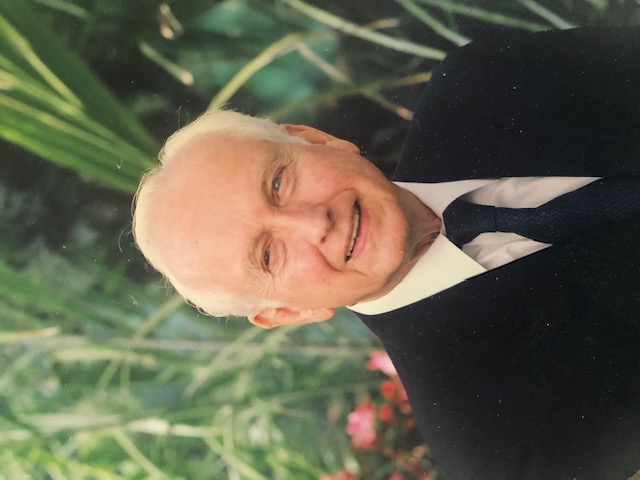
Foil: 56 Panel: 1 Column: 1 Line: 19
Wall of Honor Level: Air and Space Leader
Honored by:
Kathleen Loftman
Russ served in World War II in Navy Air as an Aviation Electronics Technician in a flight test squadron stationed at Patuxent River, Naval Air Station. After his service in the Navy, he worked part-time at General Mills and developed a telemetry system for high altitude (150,000 feet) balloon systems. He manned the night-time function to track the balloons using tracking data from multiple sources.
His first job after college was with North American Aviation on the Navaho Hypersonic Cruise Missile Program. He managed the group that provided flight test instrumentation for the X-10 Test Missile. He then went to work for Cooper Development Corporation participating in the development of the 2nd, 3rd, and 4th stages of Explorer I and was responsible for developing atmospheric sounding missile programs to measure upper atmospheric conditions up to 200,000-foot altitudes. He participated in extensive launches of these missiles at various Air Force bases including Cape Canaveral. He participated in the Hardtack Nuclear Bomb tests in the South Pacific with a sounding rocket system to measure air density at 500,000 feet altitude above the nuclear blast, in support of the Teak Nuclear test. Russ presented a paper on sounding rockets at a NATO/AGARD meeting in Paris.
Russ took a two-year educational leave and attended Princeton University where he received a Master’s Degree in Mechanical and Aerospace Engineering. His Master’s thesis was “the measurement of air temperatures at very high altitudes.” This led to an application of this technology to make explosive mixture detection instrumentation. Professor Enoch Durbin and Russ formed a company called Nassau Instruments and developed an explosive detection system to be used when fueling space systems.
At Rockwell Space Division, Russ worked on a series of space-related study programs, including satellite survivability, exploring the issue of how determine when you are under attack. His studies with Dr. James Miller led to the initial application of the newly invented CCD technology to its use as a high resolution electronic focal plane to better define incoming attacks. With support from Captain Jim Justice from ARPA, the initial CCD camera focal plane was designed, fabricated, built, and demonstrated. The RM 20B space-based camera using the newly developed CCD focal plane was funded, and the P72-2 satellite program, managed by W.A. Myers, provided the space platform for the RM 20B camera.
Russ left Rockwell to form a company called Image Information, Inc. or I3 with Dr. Dieter Pomerenig that provided consulting services to companies that were interested in applying the new CCD focal plane technology. I3 was reconfigured to become Image Information of Idaho, Inc, or I4. This consulting company supported various major aerospace programs on optic-electronic camera systems for space-based cameras. The primary customer became Science Applications International Corporation (SAIC) where over the next 20 years, he helped them design, develop, and manufacture a significant number of space-based camera systems.
Russ spent over 60 years in the evolving aerospace industry.
Wall of Honor profiles are provided by the honoree or the donor who added their name to the Wall of Honor. The Museum cannot validate all facts contained in the profiles.
Foil: 56
